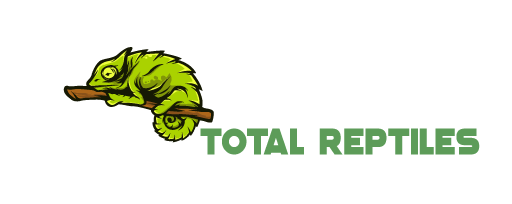A proper bearded dragon diet consists of a good amount of vegetables and fruits. Along with that, you have to provide insects, which act as a primary source of protein. You should also include some occasional foods in the diet.
A sound diet can make sure that your pet is happy and thriving. Now the question is, what vegetables, fruits, and insects should you include in the diet?
And most importantly, what are the occasional foods? To know all about these, you need to go through all the details in this discussion.
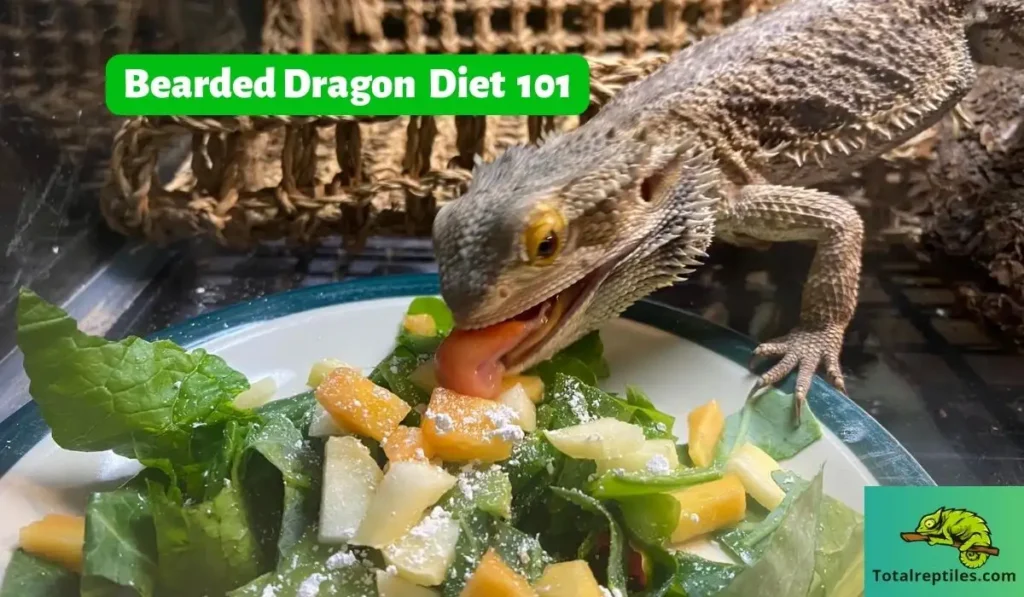
What Can Bearded Dragons Eat?
As omnivores, these reptiles eat many insects, leafy greens, and fruits. And here’s what you should include in the diet:
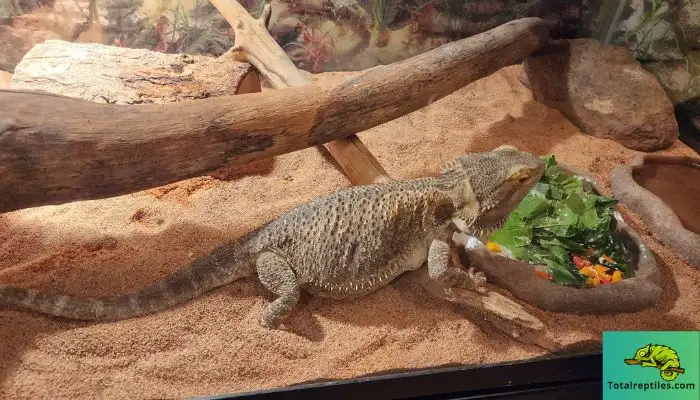
The diet of baby and juvenile bearded dragons is mostly insects. Want to know why? They need substantial protein to stay active and lead a healthy life. Generally, you need to include insects three times a day.
To be exact, wild bearded dragons usually have 60% of insects in total. In other words, more than half of the feed for a day should contain insects.
Now, if you are wondering what insects you should include, dubia roaches and crickets are the most popular in bearded dragon’s feeds. But that does not mean you can not feed them with other insects.
You can also include –
- Spiders
- Super worms
- Silkworms
- Black soldier fly larvae
- Fruit flies
- Mealworms
- Grasshoppers
- Hornworms
- King worms
- Wax worms
On that note, check which insects the bearded dragons eat more during the first few feeds. Then, stick with the insect that they like the most.
As the bearded dragons grow, you need to include more and more plant matter into the bearded dragon’s diet. And most of it should be leafy greens. That includes –
- Kale
- Endive
- Spring greens
- Watercress
- Peashoots
- Bellpeppers
- Butternutsquash
- Mustard greens
- Collard greens
- Carrots
- Alfalfa
- Hibiscus
- Pumpkin
However, remember to check the veggies or leafy greens before feeding them to your pet.
Some can be toxic to bearded dragons, while some can act to bind calcium, which will eventually make their bodies less capable of absorbing calcium.
Nonetheless, in general, the main veggies to avoid are the ones that contain goitrogens and oxalates. You will find the list of those vegetables below.
You can include a lot of different fruits in the bearded dragon’s diet. But the staple options should be prickly pear, papaya, and mango. These are the fruits that will make the overall meal of the reptile nutritious. Other than that, you can also add –
- Blueberries
- Guava
- Mango
- Papaya
- Peaches
- Blackberries
- Apricot
- Cantaloupe
- Figs
- Cherries
- Pineapples
- Watermelon
- Dates and raisins
- Pears
Occasional Foods
Wondering what occasional foods actually are? Well, these are like treats to the bearded dragons. That means you should include the occasional foods in every meal for the reptiles. Instead, these foods should be given in moderation.
Nonetheless, you have raspberries, strawberries, bananas, grapes, and kiwi for occasional fruits. You can choose from beets, green peas, and zucchini for occasional vegetables.
Finally, butterworms, earthworms, and superworms are great insect treats.
What Foods Should You Avoid in a Bearded Dragon Diet
So, there are some foods that you should not keep in the bearded dragon’s diet. They are either toxic to the reptile or will cause some health complications. Here are the lists of those specific foods according to the category they belong to:
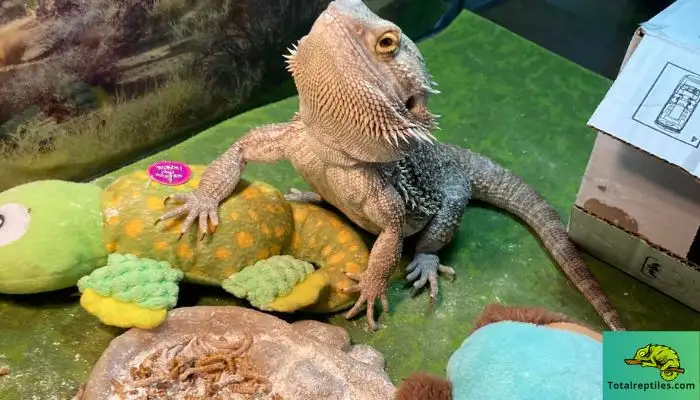
Vegetables and Leafy Greens
- Canola
- Cabbage
- Brussels sprouts
- Broccoli
- Bok choy
- Chinese cabbage
- Coy sum
- Radishes
- Potatoes
- Spinach
- Beets
- Okra
- Rhubarb
- Swiss chard
Insects
- Boxelder Bugs
- Fireflies
- Elder bugs
Fruits
- Oranges
- Lemons
- Avocado
- Apple with seeds
Why Should You Feed Bearded Dragons with Proper Diet?
In order to support bearded dragons’ health and make them thrive well in a captive situation, you need to come up with a diverse diet. Maintaining a balanced diet is quite crucial as it is the key to keeping your bearded dragons healthy.
Without sticking to a balanced diet, these reptiles can eventually face different health implications. For example, when the diet does not have the necessary nutrients, bearded dragons can develop a metabolic bone disease.
On the other hand, if you feed them a high-calorie or high-fat diet, the bearded dragons can become obese. Obese reptiles can develop fatal illnesses, which can eventually lead to death.
So, even if you keep the bearded dragons in an adequately heated tank or ensure that it has safe wood inside, you must prioritize the diet to make them thrive.
How Much Should You Feed the Bearded Dragons?
You should feed the bearded dragons three times per day. When it comes to insects, offer them a lot and let them eat as many as they can for the first 15 minutes. Remove the insects right after that 15-minute mark.
If you do not remove the insects after the 15-minute mark, they will overheat. And that will eventually lead to obesity.
When it comes to fruits, it will depend on the size and age of the bearded dragon. But in general, one meal with fruits should have a couple of small slices of mangoes or apples, half a strawberry, or 2 large-sized blueberries.
The case is the same for vegetables and leafy greens. That is, the exact mix of vegetables in each meal will depend on the age of the breaded dragons. For young bearded dragons, the meals should consist of 20% vegetables and 80% insects.
On the other hand, adults should have 80% of vegetables and 20% of insects. Also, it is better for adults not to skip plant material in a day of feed. And when it comes to the overall amount, it will depend on the appetite of the bearded dragons.
How to Feed Bearded Dragons?
When it comes to feeding bearded dragons, you have to consider a couple of things. Let’s go through them to give you get a better idea of how to feed the bearded dragons:
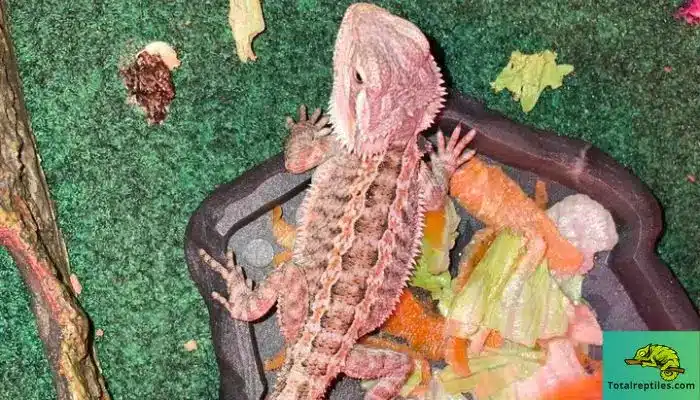
Stick to a Proper Feeding Schedule
The feeding schedule for the bearded dragons will change according to their age. For example, juvenile and baby bearded dragons need to eat at least three times per day. Adults, on the other hand, might not have much of an appetite.
But make sure that the adult bearded dragons eat at least 2 times per day. And as mentioned earlier, the adult feed should have 80% vegetables and 20% insects. On the other hand, the juveniles and babies will have 20% vegetables and 80% insects.
Include a Variety of Veggies and Insects
No matter what you do, do not include the same vegetables and insects in the diet of the bearded dragons. Variations will make sure that they get the nutrients they need and also hinder them from getting bored with the food.
Ensure That the Foods Are Not Too Large
One mistake that newbie bearded dragon keepers make is not checking the size of the insect before feeding it to the bearded dragon. Generally, no bearded dragon food should be wider than the gap between the eyes of the bearded dragons.
The insects that are too large for these reptiles can cause digestion issues. And sometimes, bearded dragons can face other health complications from eating oversized food.
And it is not just applicable to insects. You should keep the size in mind for the vegetables and fruits too. Chop or slice them into small pieces and then feed them to the bearded dragon.
Offer Easy Access to Clean and Fresh Water
The diet is not just all about food. You should also ensure that the bearded dragons always have easy access to clean water. There should be a shallow dish inside their tank, which you should change the water of regularly.
Monitor the Eating Habits and Make Changes If Required
Observe the eating habits and preferences of the bearded dragons. They might not like something that you have included in the feed. In that case, you must switch that food with something else.
Furthermore, observe the overall appetite of these reptiles. If they seem to have a sudden appetite drop, it could indicate a health problem. So, do not take the disruptions in natural eating habits lightly.
Clean Your Hands Before and After
You would not want to contaminate the foods with dirty hands. Introducing bacteria and other harmful organic substances into their food could lead to fatal consequences.
So, make sure to wash your hands when you are feeding them. Clean your hands after feeding them too.
Supplements for Bearded Dragons
A balanced diet needs to have the right amount of minerals and vitamins. So, in addition to the foods you include in the diet, you need to add some supplements.
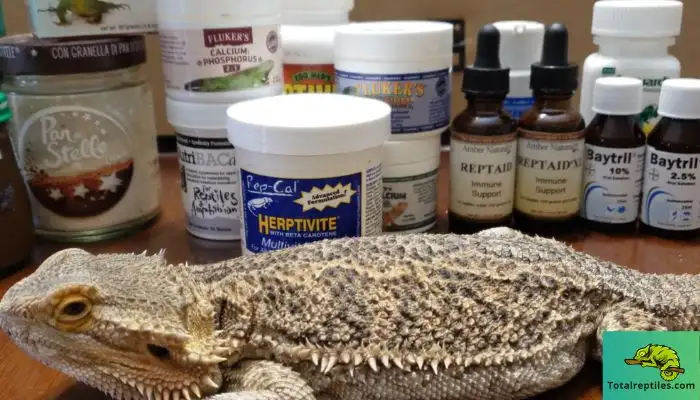
What Supplements Should You Provide?
Vitamins and calcium supplements should be your concern for bearded dragons. To be exact, you need to put a good amount of vitamin D3 and calcium supplements into the diet. They promote bone health and prevent metabolic bone diseases.
In addition to these two, you can add multivitamins to bearded dragons’ diet. But before adding multivitamins, it’s always a good idea to understand the pet’s specific needs. Consult with a veterinarian for that.
How to Provide Supplements to the Bearded Dragons?
For calcium supplements, you can dust them on the insects. And you can feed the bearded dragons vitamin D3 orally or provide the supplement through UVB lighting.
No matter what, do not over-supplement the bearded dragons, especially with vitamin D3.
What Can Happen If You Don’t Add Supplements?
Calcium and vitamin supplements are very crucial for bearded dragons. Without them, these reptiles will fail to maintain their health and overall functions of their body.
For example, when you do not feed them enough calcium-enriched diet, the bearded dragons can start to develop metabolic bone diseases. And in case you didn’t know, metabolic bone diseases are prevalent among captive bearded dragons.
On that note, without vitamin D3, bearded dragons cannot synthesize or absorb calcium. That makes the vitamin D3 and calcium combo a must-have in the diet of bearded dragons.
Hydration and Water
As discussed earlier, bearded dragons should always have access to clean and fresh water. And for that, you must keep a water dish inside their tank. In addition to that, make sure that they take occasional baths in water. Why are baths important?
Bearded dragons can absorb water through their skin. So, if you allow them to soak in a water bowl for just 10 to 15 minutes, they will be well hydrated afterward. However, you should supervise the entire bathing process.
Final Words
In a nutshell, you really do not have to do much to stick with a proper bearded dragon diet. Just consider the foods that you can provide and the one’s that you can’t.
And make sure to offer juveniles and younglings 3 times of food while providing the adults at least 2 times each day. Also, do not skimp on vitamin D3 and calcium supplementation. They are important for overall sound health.
